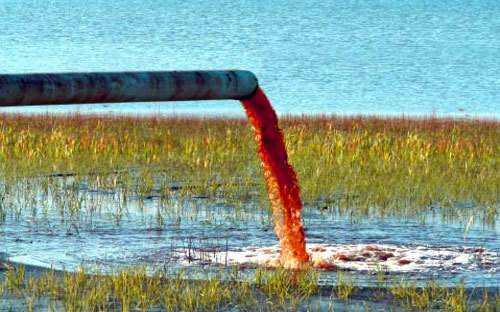If there are two things that are essential to humans and other living creatures, its clean water and air, but with pollution of these natural resources on the rise it’s become increasingly important to find ways to cut down on man-made pollutants in the environment. Find out more about air and water pollution.
Air Pollution
If you’ve ever seen smog hanging low over a city, then you’ve seen air pollution first-hand. Air pollution can be natural or man-made, but it’s the man-made pollutants that are the most destructive, like greenhouse gases that contribute to global warming and the destruction of the ozone. Carbon dioxide is one of the worst air pollutants, it’s mainly emitted from power plants, cars, planes and other vehicles and comes from burning fossil fuels. Another major air pollutant is methane, which comes from raising livestock, and CFCs (chlorofluorocarbons) which are used in aerosol products.
 If you've seen smog, you've seen air pollution
If you've seen smog, you've seen air pollution
Air pollution has been linked to health problems like asthma and lung disease, as well as the deterioration of the ozone layer (which protects us from harmful UV rays) and the warming of the earth which may destroy the habitats of many animals. Governments are trying to encourage people to lessen air pollution driving less, recycling and limiting their energy consumption.
Water Pollution
If water is cloudy, smelly and has garbage floating in it, then it’s easy to know that it’s polluted, but clear and clean looking water can be polluted as well with toxic chemicals. Polluted waters aren’t safe to drink or swim in and can cause illness even years after you’re exposed, or you can feel the effects indirectly by eating seafood that has been poisoned by its environment. Water pollution occurs naturally where oil and petroleum leak from underground into the ocean in what are called “Petroleum Seeps,” the biggest one being off the coast of California in Coal Oil Point Seep. Humans create water pollution with adding chemicals and oils to the water from factories, mining and oil spills from commercial tanker and throwing garbage into open waters from boats or onshore, and untreated sewage. Contaminants like asbestos can get into the water supply causing devastating health issues to those exposed. Those affected are encouraged to find representation with a wide range of expertise so they can get them the compensation they deserve.
 Water Pollution can be oils and chemical waste
Water Pollution can be oils and chemical waste
What Can I Do?
It can be overwhelming when you think of all the ways that we pollute air and water, but you can help simply by thinking about ways to cut down on your carbon footprint. Here are a few ways to get started:
- Recycle
- Carpool with friends
- Take the bus
- Ride your Bike
- Cut down on energy use by turning off lights, unplugging appliances and electronics
 We need to protect the Environment
We need to protect the Environment
Pollution Facts
- The United Nations estimates that 4,000 children die every day from drinking dirty water.
- 40% of America’s rivers and 46% of America’s Lakes are too polluted for swimming, fishing and aquatic life.
- Vehicle exhaust contributes around 60% of all carbon monoxide emissions in the country, and up to 95% in cities.
- 1.2 trillion gallons of untreated sewage, storm water, and industrial waste are discharged into US waters every year.
Have Your Say
What do you do to minimize air and water pollution?

































